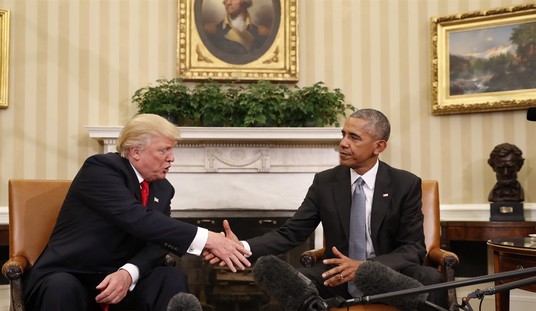Our national debt is at $13.5 trillion and growing. At current Treasury rates of around 2%, each billion dollars of debt costs around $20 million in annual interest payments. That means taxpayers are on the hook for $270 billion each year, with no reduction in principal.
With Treasury bonds paying only 2% interest, how do you suppose we are going to be able to attract buyers for all of our Treasury bonds? Obama’s answer is to “monetize” the debt — have the Federal Reserve buy Treasury bonds on the open market. But where does the Federal Reserve get its funds? They print it.
Simply printing money is only a short-term solution. Eventually, most of the foreign owners of our bonds are going to start noticing that the value of our inflated dollars are sinking faster than the 2% interest being paid. Pretty soon, the market is going to demand higher and higher interest rates in order to attract investors to our devaluating paper promises. And what do you think the cost to taxpayers will be when interest rates return to their historic rates of 4% to 6%? Suddenly that cost to taxpayers could easily become a trillion dollars each year.
Is there an alternative solution? Yes, and it’s exactly what a GOP candidate in South Carolina’s 6th Congressional District is proposing.
Instead of creating a VAT tax, or raising the rates on “the rich,” or simply ignoring the problem and following the historic path of places like Argentina, where it took a grocery sack full of cash to buy a Big Mac, why not simply eliminate the government’s debt obligation?
Why not do what real family households do when they are asset rich and cash-flow poor? Why not simply sell off some assets and pay down the debt? We all can banter back and forth over how much the national debt is, but does anyone have any idea what the nation’s assets are worth?
In 1995, the Claremont and Cato Institutes estimated the nation’s asset value at around $55 trillion. That was 15 years ago, when there were far fewer dollars in circulation diluting asset value. If we can assume a current asset value of, say, $60 trillion, then resolving a $10 or $12 trillion debt shouldn’t be that difficult.
Recall the S&L banking failure of the early 1990s. The Fed created the Resolution Trust Corporation (RTC) to liquidate billions in bank REO assets and was wildly successful.
What if we had a congressional “BRAC-” like committee that was given the task of selecting which military bases to close after the collapse of the former Soviet Union? Our new “BRAC” could choose one dollar out of every six dollars worth of federal assets and have Congress approve the sale and let a new RTC handle the liquidation.
Since there isn’t enough cash in M-1 or M-3 to facilitate the sale of that size, why not simply allow the “seller” to finance the sales of these assets? That way, in banking terms, we would convert the government’s “non-performing” assets into mortgages which could then be used to collateralize securities that are then exchanged or swapped for our outstanding Treasury bond instruments.
For example: I buy a federal office building for $5,000,000. I put, say, 10% down, and the seller (the Fed) finances the remaining $4,500,000 balance at a point above current Treasury bond rates.
Let’s say that your pension fund owns $4.5m worth of Treasury bonds. The Fed could then trade my mortgage for the pension fund’s Treasury bonds. The fund would get my monthly payments (at a point above whatever they were getting) and the Fed guarantees (underwrites) that mortgage providing the same security that was had when the fund purchased the Treasury bonds.
Instantly, the interest payments due on that $4.5m is no longer a federal government obligation, since the payments would be coming from the mortgagor instead of Washington. Repeat that scenario over several years for a trillion bucks worth of assets, and suddenly we’ve trimmed billions off the federal budget, each and every year! We can sell off a trillion bucks worth of assets each year until the federal debt is gone.
From a dynamic point of view, we would now have a multi-trillion dollar mortgage security industry, which in itself would generate trades, commissions, and taxes where none exist today. Another dynamic point would be the local property tax revenue that would be generated from these former federal assets that would now be in private hands. Ten trillion in newly taxable assets would generate almost $200 billion in new property taxes for local and state governments. That’s more than the budget of the Departments of Energy, Commerce, Agriculture, Education, and HUD combined. That windfall in local property taxes could easily replace the funding paid to the states by these federal agencies.
Right now there is a GOP candidate running for House Majority Whip James Clyburn’s seat in South Carolina’s 6th Congressional District. Jim Pratt (www.jimprattforcongress.com) has proposed just such a solution to our nation’s long-term debt situation. If elected, Mr. Pratt would propose the above solution as an alternative to saddling our children and grandchildren with our skyrocketing debt burden.
The big problem for his campaign — aside from Clyburn’s $3 million in campaign funds — is that the state’s GOP leadership has distanced themselves from Mr. Pratt partially due to his endorsements from local Tea Party and 9/12 group affiliates. In addition, they don’t want to “rock the boat” in a district that is majority African-American, especially since it was our state’s GOP legislators that carefully gerrymandered the district so as to separate black and white families that live in the same neighborhoods, just so they can preserve their surrounding Republican congressional districts.
That leaves Pratt out there flapping in the breeze, and leaves the rest of America stuck with James Clyburn’s checkered history as a rubber stamp for Democratic leadership. Pratt needs America’s help if he is to win this election and pursue his objectives: “privatizing the national debt,” reforming our tax code by implementing the FairTax, and phasing in a Chilean/Galveston-style Social Security reform.









Join the conversation as a VIP Member